You are using an out of date browser. It may not display this or other websites correctly.
You should upgrade or use an alternative browser.
You should upgrade or use an alternative browser.
Arken Scopes comparison and testing (in progress)
- Thread starter LoonWulf
- Start date
Lefty38-55
Member
45/30-06OKIE
Member
Can you kindly explain what this chart is supposed to be used for? Cause I'm dumb and don't see a correlation between the numbers and the lines on that chart? Thanks in advance.USAF resolution chart attached, of someone wants one. These, and others, are still used in the laser or precision optic/lens industry.

gunmechanic
Member
The sh4 gen2 have locking turrets. The x2 i just got lock .I love the scopes for the $
.The turrets are awesome, great scope for someone like me just starting out dialing.I ordered the new ep-8 for an ar i just finished .I will let you all know how it is.
The Arken scopes do not have a turret lock. They only have a zero stop.
.The turrets are awesome, great scope for someone like me just starting out dialing.I ordered the new ep-8 for an ar i just finished .I will let you all know how it is.
None of my three SH-4 Gen II turrets lock. Neither does the turrets on my SH-4J that I just received. They do have a zero stop though.The sh4 gen2 have locking turrets. The x2 i just got lock .I love the scopes for the $
.The turrets are awesome, great scope for someone like me just starting out dialing.I ordered the new ep-8 for an ar i just finished .I will let you all know how it is.
Arken scopes definitely have good turrets that track well with solid clicks. Nothing mushy about the turrets.
Lefty38-55
Member
Resolution Chart TestingCan you kindly explain what this chart is supposed to be used for? Thanks in advance.
A resolution chart is a picture that has periodic objects in it that can be used to check the quality of optics. An old and famous resolution chart is the USAF 1951 test target. This resolution test chart was developed by the US Air Force to test lenses used to take pictures from airplanes. The National Bureau of Standards (now known as NIST) had their own resolution chart, and ISO has a chart designated 12233 for testing of electronic still cameras.
There are several ways to use these charts. One way is to simply take a picture of them through the lens you’re trying to test. This works for lenses designed to image at finite conjugates (the distance from the lens to what it is aimed at is less than infinity). For infinite conjugate lenses, put the chart a the focus of a collimator and take a picture through the collimator. Or, for lenses designed for visual use, the lens is placed so that the target is at its rear focal plane and the inspector looks at the image (at infinity) formed by the lens.
The advantages of resolution chart testing are that it is inexpensive and insensitive to vibrations. Disadvantages include the challenge of deciding whether a certain target is resolved or not, a decision which must be made by looking at the image through a camera and assessing by eye.
For Your Use on Rifle Scopes
See the numbers down the left side, 2 through 6, and then 1 through 6 on the right side? Say like when comparing 2 scopes, can both read or resolve '#6' fine (from the right side) or do the 3 lines blur together on one of the scopes? So it is not a quantitative assessment, but really a relationship assessment, in that one optic might be clearer to read the 3-bar set '6' easier than the other.
I also find it particularly useful for determining and adding my own parallax marks on a scope adjustment knob, vs. the ones the Mfg'r put there. I just use a dot of white fingernail polish.
45/30-06OKIE
Member
Thanks so much!Resolution Chart Testing
A resolution chart is a picture that has periodic objects in it that can be used to check the quality of optics. An old and famous resolution chart is the USAF 1951 test target. This resolution test chart was developed by the US Air Force to test lenses used to take pictures from airplanes. The National Bureau of Standards (now known as NIST) had their own resolution chart, and ISO has a chart designated 12233 for testing of electronic still cameras.
There are several ways to use these charts. One way is to simply take a picture of them through the lens you’re trying to test. This works for lenses designed to image at finite conjugates (the distance from the lens to what it is aimed at is less than infinity). For infinite conjugate lenses, put the chart a the focus of a collimator and take a picture through the collimator. Or, for lenses designed for visual use, the lens is placed so that the target is at its rear focal plane and the inspector looks at the image (at infinity) formed by the lens.
The advantages of resolution chart testing are that it is inexpensive and insensitive to vibrations. Disadvantages include the challenge of deciding whether a certain target is resolved or not, a decision which must be made by looking at the image through a camera and assessing by eye.
For Your Use on Rifle Scopes
See the numbers down the left side, 2 through 6, and then 1 through 6 on the right side? Say like when comparing 2 scopes, can both read or resolve '#6' fine (from the right side) or do the 3 lines blur together on one of the scopes? So it is not a quantitative assessment, but really a relationship assessment, in that one optic might be clearer to read the 3-bar set '6' easier than the other.
I also find it particularly useful for determining and adding my own parallax marks on a scope adjustment knob, vs. the ones the Mfg'r put there. I just use a dot of white fingernail polish.

That is a great ideaI also find it particularly useful for determining and adding my own parallax marks on a scope adjustment knob, vs. the ones the Mfg'r put there. I just use a dot of white fingernail polish.
Welp, taking photos is out of the question for me. I just could not get a clear enough picture when even using a camera holder with my iPhone 14 Plus. Just looking at the sign on my neighbors garage at 50 yards I would have to say that the SH-4J glass is as good as the EP5 glass (judging from @LoonWulf 's photos)
The SH-4 Gen II starts to get blurry around the edges at 16X and above when're the SH-4J was clear around the edge at all magnification levels. For anyone thinking about buying the SH-4, go with the SH-4J because the extra $100 is well worth the better and clearer glass.
The SH-4 Gen II starts to get blurry around the edges at 16X and above when're the SH-4J was clear around the edge at all magnification levels. For anyone thinking about buying the SH-4, go with the SH-4J because the extra $100 is well worth the better and clearer glass.
MarshallDodge
Member
50 yard pictures wouldn't do a lot for me. 10 years ago, I purchased one of the lower end, Chinese made, Primary Arms 4-16x scopes. At 50 yards with good sunlight, it looked good.
Later on a cloudy day, at 500 yards, I really struggled to see my hits on steel. Since that time I am a little more particular about the scopes I buy, but the Arken with the Japanese glass sounds like it has promise.
Later on a cloudy day, at 500 yards, I really struggled to see my hits on steel. Since that time I am a little more particular about the scopes I buy, but the Arken with the Japanese glass sounds like it has promise.
I just stepped outside and looked at stop signs and license plates from 200 to 300 yards away with the SH-4J. Everything was clear at all magnification levels and I could read the license plates just fine at those distances. I had the sun in my face with no sun shade installed on the scope.
Now that I own both versions of the SH-4, YES the Japanese glass is definitely worth the extra $100. I will recommend any of the Arken scopes with Japanese glass for those on a tighter budget. I definitely like the Arken scopes better than the comparably priced Primary Arms scopes. My Swampfox Optics Patriot scope falls in between the SH-4 Gen II and SH-4J as far as clarity goes. The Patriot is the lowest level scope from Swampfox. I also put the Swampfox Patriot above the Primary Arms scopes at the same price level.
Now that I own both versions of the SH-4, YES the Japanese glass is definitely worth the extra $100. I will recommend any of the Arken scopes with Japanese glass for those on a tighter budget. I definitely like the Arken scopes better than the comparably priced Primary Arms scopes. My Swampfox Optics Patriot scope falls in between the SH-4 Gen II and SH-4J as far as clarity goes. The Patriot is the lowest level scope from Swampfox. I also put the Swampfox Patriot above the Primary Arms scopes at the same price level.
Light makes a huge difference in what you can see, one reason the better coatings make a difference, since they let more light through. So does good glass.At 50 yards with good sunlight, it looked good.
But yea, mediocre optics can look real good in great conditions.
Thats why most of my testing/pictures are in lower light conditions. Tho ive found that bright light and white targets create their own issues.Light makes a huge difference in what you can see, one reason the better coatings make a difference, since they let more light through. So does good glass.
But yea, mediocre optics can look real good in great conditions.
MarshallDodge
Member
Up here at 4K feet, we get a lot of sun. I remember when I was down shooting in Bay Minette on a partly cloudy day. It was like I was looking through a pair of sunglasses.Light makes a huge difference in what you can see, one reason the better coatings make a difference, since they let more light through. So does good glass.
But yea, mediocre optics can look real good in great conditions.
LiveLife
Member
I agree. When I do bright full sun scope test, small print on power transformer 100 yards away is viewed for testing sharpness clarity.Light makes a huge difference in what you can see, one reason the better coatings make a difference, since they let more light through. So does good glass.
But yea, mediocre optics can look real good in great conditions.
Same here. To me true scope test is done in low light conditions and I always conduct low light test under dark shadows of tree shades at 100 yards before sunset and after sunset.Thats why most of my testing/pictures are in lower light conditions. Tho ive found that bright light and white targets create their own issues.
I went out again a couple of minutes ago now that its darker and all street lights are on. Still nice and clear at alll magnification levels. I forgot to install the battery so I will have to test illumination another time. I was even reading graffiti on the passing train at 350 yards away.
Couple more images and another optic to consider.
Riton X5 Primal 3-18x44. Clarity and resolution a bit better than the Arkens IMO, not quite as bright as the EpL or Ep5 at rhe same powers, but also smaller. There is some fisheye on the edges, and a little blur at the lower powers.....could be a mechanical issue as noted below.
Of note its going back for repair, reticle is shifting with the power ring.
18
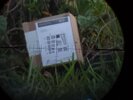
12
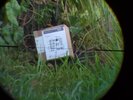
3
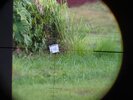
Reticle moving under zoom, images and return to poa is pretty good tho.
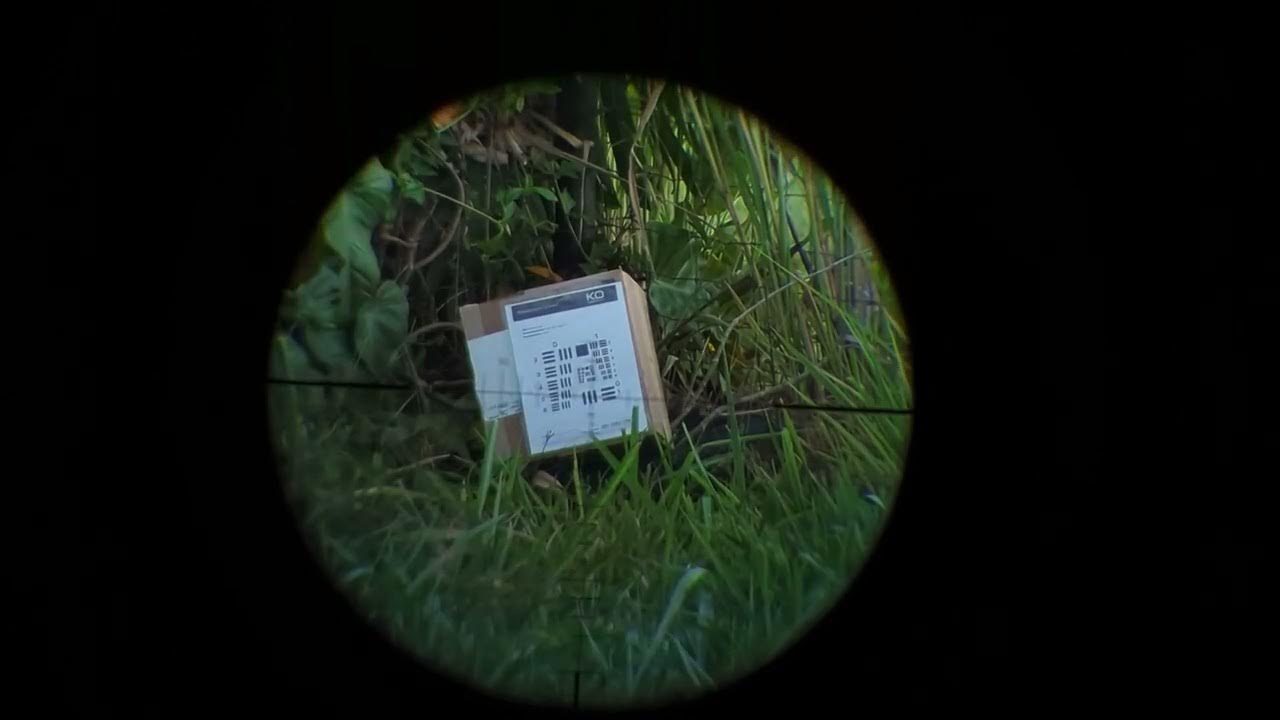
 youtu.be
youtu.be
Riton X5 Primal 3-18x44. Clarity and resolution a bit better than the Arkens IMO, not quite as bright as the EpL or Ep5 at rhe same powers, but also smaller. There is some fisheye on the edges, and a little blur at the lower powers.....could be a mechanical issue as noted below.
Of note its going back for repair, reticle is shifting with the power ring.
18

12

3

Reticle moving under zoom, images and return to poa is pretty good tho.

X5 Primal reticle shift.
troy fairweather
Member
what's the weight on that one, nice useful power range to. Like the reticle,but still like the dot.Couple more images and another optic to consider.
Riton X5 Primal 3-18x44. Clarity and resolution a bit better than the Arkens IMO, not quite as bright as the EpL or Ep5 at rhe same powers, but also smaller. There is some fisheye on the edges, and a little blur.
Of note its going back for repair, reticle is shifting with the power ring.
18
View attachment 1171839
12
View attachment 1171840
3
View attachment 1171841
Reticle moving under zoom, images and return to poa is pretty good tho.

X5 Primal reticle shift.
youtu.be
Nother one to compare
Athlon Ares BTR 4.5-27x50.
I got to this from Walmart for just under 600 shipped. These are listing (with the other reticle options) for 7 to 900 elsewhere and on Walmart site. So this is a little out of the price range we're currently looking at.
I had an Ares Gen 1, and if I remember correctly, the optics weren't quite as good as this, but they were pretty decent.
The turrets have been improved significantly. My original one was pretty indistinct, though attract really well. The new turrets are very crisp and precise.
I still prefer the Arken, and Ritons larger turrets with a greater distance between "clicks", they're easier to move faster, accurately.... Athlon offers bigger turrets on other models.
The Reticle is the same one ive used in Athlons since i got my original Ares. It does what it needs to do, and even on low power it's thick enough that I can use it as a crosshair in most conditions.
I prefer the center dot reticle some of the other scopes have.
I like the just the main lines are lit up when the illuminations on. Again, I prefer the Arkens center illumination and nothing else, but I don't see any likelihood of trying to use the holdovers in lighting where I need the illumination.
Optically I find this scope to be very close to the S3 and Meopta.
So far I'm not finding it quite as pleasant to use, but it's good enough that I can't actually tell you why. I'll do more poking and prodding and see if I can't figure it out.
Got a scurry off to work.... I'll clean up and update this post a little bit later.
27
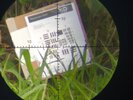
13
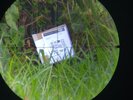
4.5
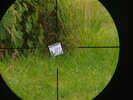
Athlon Ares BTR 4.5-27x50.
I got to this from Walmart for just under 600 shipped. These are listing (with the other reticle options) for 7 to 900 elsewhere and on Walmart site. So this is a little out of the price range we're currently looking at.
I had an Ares Gen 1, and if I remember correctly, the optics weren't quite as good as this, but they were pretty decent.
The turrets have been improved significantly. My original one was pretty indistinct, though attract really well. The new turrets are very crisp and precise.
I still prefer the Arken, and Ritons larger turrets with a greater distance between "clicks", they're easier to move faster, accurately.... Athlon offers bigger turrets on other models.
The Reticle is the same one ive used in Athlons since i got my original Ares. It does what it needs to do, and even on low power it's thick enough that I can use it as a crosshair in most conditions.
I prefer the center dot reticle some of the other scopes have.
I like the just the main lines are lit up when the illuminations on. Again, I prefer the Arkens center illumination and nothing else, but I don't see any likelihood of trying to use the holdovers in lighting where I need the illumination.
Optically I find this scope to be very close to the S3 and Meopta.
So far I'm not finding it quite as pleasant to use, but it's good enough that I can't actually tell you why. I'll do more poking and prodding and see if I can't figure it out.
Got a scurry off to work.... I'll clean up and update this post a little bit later.
27

13

4.5

45/30-06OKIE
Member
Ok so I got Loonwulfs Arken EPL 4 scope in last week and checked it out compared to my vortex viper HS and I'm actually impressed to be honest! It was what seemed to my blind self, clearer by a fair bit view at high magnification range and looking at small text on a target. So my opinion is definitely changed on them. I thought they were over hyped China junk, but they are actually pretty decent, at least this exact scope, I could buy one myself and get a lemon, which I almost guarantee would happen in my case if y'all know my reloading misadventures...... I will look for an Arken on sale or something perhaps and try it out more. Oh yeah I shot 7 rounds out of my 6.5 prc and it stayed zeroed so I'll take that as a pass on the holding zero function. Tha is for lending it to me and I'll be shipping it back to ya on Saturday morning!
P.S. I forgot to add that this suffers from the same fatal flaw as my Vortex Viper HS, which is the Eye Box/relief is trash at mid to high magnification. If anyone knows of a scope that had a good eye box at high magnification I'd greatly appreciate it.
P.S. I forgot to add that this suffers from the same fatal flaw as my Vortex Viper HS, which is the Eye Box/relief is trash at mid to high magnification. If anyone knows of a scope that had a good eye box at high magnification I'd greatly appreciate it.
That goes with the territory, although I’m sure some are better than others. I have no complaints about the eyebox on my PST Gen II, and I hate a small eyebox.P.S. I forgot to add that this suffers from the same fatal flaw as my Vortex Viper HS, which is the Eye Box/relief is trash at mid to high magnification. If anyone knows of a scope that had a good eye box at high magnification I'd greatly appreciate it.
The old HS was not nearly as good a scope.
45/30-06OKIE
Member
Ok, sounds like I need to find us a better scope wholesaler! Cause Chattanooga and Davidsons sell mainly either super expensive stuff or cheap junk with not much in-between. Like they dont sell Vortex or Arken. They sell Leopold.That goes with the territory, although I’m sure some are better than others. I have no complaints about the eyebox on my PST Gen II, and I hate a small eyebox.
The old HS was not nearly as good a scope.
Maybe I should try EuroOptic?
NIGHTLORD40K
Member
Optics Planet?Ok, sounds like I need to find us a better scope wholesaler! Cause Chattanooga and Davidsons sell mainly either super expensive stuff or cheap junk with not much in-between. Like they dont sell Vortex or Arken. They sell Leopold.
Maybe I should try EuroOptic?
Similar threads
- Locked
- Replies
- 2
- Views
- 2K
- Locked
- Replies
- 71
- Views
- 4K
- Replies
- 25
- Views
- 2K
- Replies
- 20
- Views
- 1K

